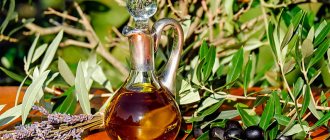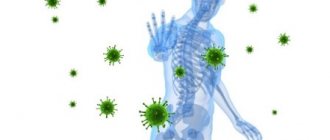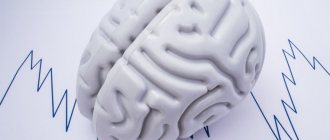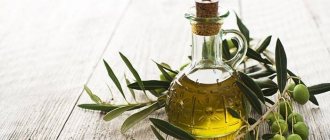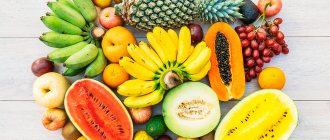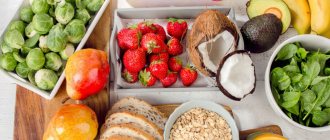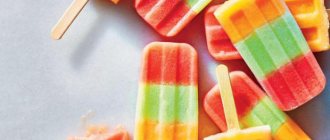Vegetable fat: what is it?
Vegetable fats are lipid compounds contained in the nutritious parts of plants. Humans eat such sources of these substances as nuts, oil-rich plant seeds, olive and avocado pulp, fruit seeds, and grain germs.
The listed products also serve as raw materials for extracting oils that are actively used in cooking and the food industry.
What fats exist and are they all good for the body?
Even if you decide to lose weight, a low-fat menu will not be the right choice. Without lipids, it is impossible to provide a nutritious, healthy diet. They should account for about 30% of the total amount of food consumed if you want to maintain health and an attractive appearance. But it is important to understand that such foods can be very different and have different effects.
Unsaturated fatty acids
The valuable components of omega-3, -6 and -9 differ significantly from each other and are found in different sources. They are united by the fact that they are necessary for our body, and also have a similar molecular structure - they are not saturated with hydrogen atoms, which is why the name sounds like that. When they talk about foods rich in healthy fats that do not interfere with weight loss, they mean exactly this list:
- mackerel;
- salmon;
- herring;
- tuna;
- halibut;
- squid;
- shrimps;
- flax seeds;
- walnuts.
Nutritionist's comment
Some enterprises produce products artificially enriched with acids of this category - yogurt, soy milk, semi-finished products and even flour. But omega-3 has a specific fishy smell; to get rid of it, it is necessary to carry out complex chemical treatment. This reduces the biological value of the component. Therefore, it is recommended to choose natural sources of fatty acids.
The Omega-6 category also includes essential elements that the body is not able to synthesize. These healthy fats can be found in unrefined vegetable oils:
- corn;
- sesame (also in sesame seeds);
- soy;
- sunflower;
- Pine nuts;
- pistachios.
A small amount is found in eggs, offal and lard (salted, fried will not be beneficial).
But you should be aware of the measure, since an incorrect balance can lead to deterioration in health. The diet should contain more seafood and less Omega-6 acids. An imbalance in the opposite direction can lead to disruption of the cardiovascular system and premature aging.
Nutritionist's comment
High-quality unrefined oils should not be used for frying; heat treatment is harmful for them, since in the process they lose valuable properties and even become toxic. It is better to add them to ready-made dishes and to dress salads.
Omega-9 (oleic acid) receives very little attention compared to the groups described above. This is due to the fact that it can be synthesized by the body, which means it is not essential. But nutritionists still recommend eating foods with these healthy fats; their list mainly includes oils:
- olive;
- peanut;
- almond;
- hemp.
Other sources include beef, pork and poultry.
Saturated
The molecular structure of such lipids contains many hydrogen atoms, due to which the substance has a more viscous and solid consistency. Sources are butter, lard and animal meat, cream and sour cream; fatty acids are also contained in products of plant origin - coconuts, shea tree seeds.
This component is also needed, it is only important to know when to stop. Excess can lead not only to an increase in body volume and weight, but also to health problems, in particular, an increase in the level of “bad” cholesterol in the blood.
If you decide to find out what fats you can eat, and which are the most beneficial for the body when losing weight, then you can draw the wrong conclusion about the dangers of animal fat-containing foods. In no case should you completely abandon it, however, it is important to limit the intake of saturated acids - their share should not exceed 10% of the daily diet.
This component is not the main enemy of the figure; this role is played by fast carbohydrates, which trigger the so-called “insulin circle”, which makes us constantly feel hungry. Fatty foods do not have this effect, but excessive doses also have a negative effect on the body. You can’t completely give up natural lipids, but you can avoid sugar and the goodies that contain it, without harm to your health.
Trans fats
The list of foods containing healthy fats does not include fast food, which is produced using margarine and similar fat-containing agents. Such food does not contribute to maintaining a fit, beautiful figure; on the contrary, it only spoils everything - because of it, there is a tendency to obesity, the risk of developing diabetes and cardiovascular diseases.
These are processed lipids, which have many advantages for manufacturers - low cost, long shelf life, stability against oxidation, and the ability to improve the taste and consistency of products. But this list does not include benefits for the body.
After hydrogenation, their structure changes significantly, and with it the functionality of these molecules. They can no longer transport nutrients properly to the tissues and disrupt the normal course of metabolic processes. Where healthy fats are not contained, but only harmful analogues, which are simply deposited on the stomach and thighs:
- industrial desserts;
- French fries;
- refined vegetable oil;
- mayonnaise;
- chocolate;
- chips;
- snacks;
- protein bars;
- semi-finished products and sausages.
Vegetable fats: composition and nutritional value
The importance of oils as a component of human nutrition is as follows:
- They dissolve vitamins D, A, E. Without combining with lipid, vitamins cannot participate in the body's metabolic processes.
- Fats are associated with substances valuable for health - phospholipids and tocopherol compounds. They have a beneficial effect on the myelin sheaths of brain neurons, blood vessels, vision, and skin condition. Lipid deficiency leads to deterioration in the functioning of these systems and organs.
- Unsaturated acids contained in oils and raw materials for their production help reduce the content of low-density lipoproteins in the body, a type of cholesterol that can accumulate on the walls of blood vessels, causing atherosclerosis.
- Getting enough lipids from food is important for the female reproductive system.
A person who is not overweight can receive about 80 grams of fat per day from food. Half of them are plant lipids.
Be sure to read: Foods rich in fiber: list of what dietary fiber is needed for, daily value
It is recommended to add oils or seeds to salad or cooked porridge. When they are subjected to heat treatment (including frying in oil), the properties needed by the body are reduced due to oxidation.
Harm of fats
Excess fatty foods lead to the following consequences:
- obesity;
- diseases of the cardiovascular system.
The risk of heart attack, stroke, and atherosclerosis increases. Overeating most often occurs due to excessive consumption of trans fats found in fast food, processed foods and similar foods.
A balanced diet will help you avoid unpleasant consequences. Unsaturated fats should make up 70% of the diet, and saturated fats – 30%. The optimal ratio of Omega-6 to Omega-3 acids is 4:1.
Sunflower and corn oil release carcinogens during heat treatment, so it is best to use olive oil for frying. The product loses its beneficial properties, but does not become harmful.
Categories of vegetable fats
Based on the structure of triglyceride molecules, lipid categories are distinguished:
- Unsaturated ones bring the greatest benefits: they improve vision, texture and appearance of the skin, have an anti-inflammatory effect, and prevent the formation of plaques in large vessels. It is to provide them that oils and seeds should be included in the diet. Among animal products, they are found in marine fish.
- Saturated foods increase the load on the heart and add kilograms. Lard and butter are rich in them, and in any vegetable raw material the percentage of such fats is small.
- Trans fats are produced artificially through the hydrogenation of conventional oils. They have a solid texture and are used in industry to reduce the cost of production as a substitute for expensive animal fats (margarines, dairy products) and vegetable fats (a substitute for cocoa butter in the production of confectionery bars, icing for chocolates). They bring only harm to the body. Research shows that their effects are similar to those of high consumption of saturated fat. They contribute to the development of atherosclerosis and heart disease. It is important to read the ingredients on product labels and avoid purchasing if you see the words “cocoa butter substitute” or “palm oil.”
According to the production method, hot and cold pressed oils are distinguished. With the second method, more substances important for health are retained in the oil. It is recommended to buy only unrefined oils.
Foods containing healthy fats
We described the Kwasniewski diet as a controversial method, which, however, has proven to be effective. You don't have to resort to such drastic measures by including some foods in your diet that make it easier to lose pounds.
- Fish fat
Obtained from cod liver. Today, fish oil is used in capsules as a common medicine. The weight loss effect is based on the ability to regulate insulin levels and create a long-lasting feeling of fullness. Take 30 mg (2 capsules) three times a day for three weeks. Then they take a break for three months, after which the course is repeated.
- Meat
Nutritionists consider the meat of young animals (lamb, goat, calf) as a source of monounsaturated fatty acids, which trigger the process of breakdown of lipid reserves.
- Vegetable oils
Traditional source of polyunsaturated fatty acids. The leader is olive - a tablespoon contains 9 g. Flaxseed is no less useful, but has a specific taste. Regular consumption of vegetable oils has a beneficial effect on digestion and metabolism, which accelerates weight loss.
- bitter chocolate
The cocoa content must exceed 70%. Then from 100 g you can get 32 g of fats, many of which stimulate lipolysis. Combined with appetite suppression, this is an excellent way to lose weight.
- Nuts
A very high-calorie product, but a recognized “champion” in terms of the content of valuable lipids.
Given these numbers, you can safely include a small amount of treats in the diet of a person losing weight.
- Hard cheese
If the fat content is less than 40%, the product is considered dietary. There are fasting days on cheeses that help you quickly lose a few kilograms. Unlike margarine, they are composed of healthy fatty acids.
- Avocado
This exotic fruit has long been known as an effective fat burner. But 10 g of its pulp contains 1 g of fat. It is important to eat fresh fruits that have not been heat-treated. This rule applies to all products, since at high temperatures fatty acids are converted into difficult-to-digest toxic substances.
Is it possible to eat foods high in fat?
The listed products are sources of high concentrations of lipids, so they must be consumed in doses. People who are not overweight should include them in their diet in such quantities that, when converted to pure fat, there is no more than 40 grams per day.
Be sure to read: Fast carbohydrates: list of products, table, what they are needed for, which ones are suitable for weight loss
For overweight people, cut this amount in half. Of animal fats, fish rich in essential acids is preferable. If a person does not have signs of atherosclerosis and hypertension, he can also consume butter, fatty cheeses, and lard in limited quantities.
Is there a connection between fats and weight gain?
The fear of consuming fats due to the possibility of gaining excess weight is associated with their high calorie content - a gram of lipids provides twice as many calories as a gram of proteins or carbohydrates. Indeed, when losing weight, it makes sense to keep the level of fat consumed under control.
However, we should not forget that different nutrients have different effects on biochemical processes in the body. Consumption of the contents of fat reserves begins when glycogen reserves in the liver are depleted and the intake of sugars from food is low, so the creation of a carbohydrate deficiency plays a key role in the process of losing weight.
Fat intake should be 10-20 grams lower than for a thin person. Preference should be given to olive and sesame oils, as well as red fish as sources.
The benefits and harms of vegetable fats
The beneficial effects of these substances on the body are:
- improving the elasticity of vessel walls;
- preventing the deposition of cholesterol accumulations in the lumens;
- formation of the structure of cell membranes;
- easy digestibility, low load on the gallbladder and liver compared to animal lipids;
- improving intestinal motility, alleviating constipation;
- binding of vitamins.
The negative aspects include the effects of trans fats on the body. To avoid it, you need to give up margarines, baked goods containing them, processed cheeses and chocolate-covered sweets.
Also, any fats, including cold-pressed oils, are subject to strict reduction in the diet of patients with inflammation of the pancreas, diseases of the liver and bile ducts.

